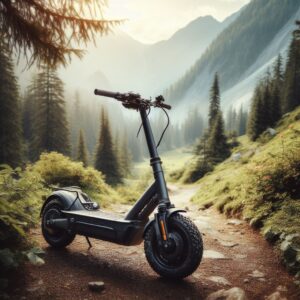
E-Scooters: Revolutionizing Urban Mobility
The E Scooter is In the ever-evolving, intricate urban tapestries of the 21st century. Amidst the myriad of alternatives that have surfaced, electric scooters, often denoted as e-scooters, have firmly entrenched themselves as trailblazers.
Reimagining our traversal of the urban labyrinth. This web page serves as your portal to unravel the enigma and embrace the realm of e-scooters.
In a ground breaking embodiment of sustainable transportation. Here, we venture into how these compact, eco-conscious conveyances are redefining our daily commute, and a more verdant future.
The Unveiling of E-Scooters
The evolution of e-scooters, from experimental tech gizmos to ubiquitous urban fixtures, is a spectacle in itself. These sleek, agile vehicles have captured the imaginations of city dwellers worldwide. E-scooters have transcended their initial novelty and evolved into practical, popular solutions for short-distance urban travel. But what forces have propelled their meteoric ascent?
The ascendancy of E-Scooters is more than just the story of a trendy transportation mode’s development and proliferation; it’s a narrative of adaptability and ingenuity. E-scooters commenced as a tech-infused urban mobility experiment, and their journey is a testament to human inventiveness. They’ve seamlessly integrated into urban transport networks, reshaping not only our commutes but also our perceptions of the urban landscape.
Cracking the Code of E-Scooter Mechanics
Ever wondered about the wizardry behind these nimble scooters? The enchantment begins with a fusion of cutting-edge technology and ingenious engineering. E-scooters operate on electric power, typically stored in rechargeable lithium-ion batteries. These batteries provide the energy necessary to propel the scooter, and their capacity largely determines the scooter’s range on a single charge.
The electric power generated by the battery powers an electric motor, typically mounted near the rear wheel. This motor transforms electrical energy into mechanical motion, setting the e-scooter in motion. The controls, typically on the handlebars, enable riders to accelerate and decelerate. Additionally, safety features like brakes, lights, and electronic stability control systems are incorporated into some e-scooter models.
Understanding the mechanics behind e-scooters not only demystifies their operation but also illuminates the remarkable engineering behind these modern wonders. It’s akin to peering under the hood of your car to grasp its inner workings, albeit with the added thrill of being part of an eco-conscious movement.
The Merits of E-Scooters
E-scooters offer a multitude of benefits for riders, the environment, and urban infrastructure. One of the most immediate advantages is the alleviation of traffic congestion. As cities grapple with gridlock, e-scooters provide a nimble and efficient alternative for short journeys. They deftly navigate traffic, zipping past long lines of cars, offering a swift and agile solution to urban commuting.
Another significant benefit is their eco-friendliness. E-scooters produce zero tailpipe emissions, contributing to cleaner air and reduced urban pollution. They are often powered by electricity generated from renewable sources, further bolstering their green credentials. By reducing the number of gas-guzzlers on the road, e-scooters play a role in combating air pollution and climate change.
Economically, e-scooters inject several advantages into cities. They create employment opportunities, from scooter maintenance to customer support and operations. Moreover, e-scooters can decrease road wear and tear, prolonging the lifespan of city infrastructure and ultimately saving on maintenance costs.
From a public health perspective, e-scooters encourage physical activity and discourage sedentary habits since riders must stand and balance. This can lead to improved cardiovascular health and overall fitness. Furthermore, e-scooters offer an alternative to short car trips, reducing the risk of accidents and injuries on the road.
Safety Above All: Riding and Regulations
While e-scooters offer numerous perks, safety is of paramount importance. Just as with any mode of transport, it’s essential for riders to adhere to safety guidelines and traffic rules. This ensures not only their own safety but also the safety of pedestrians and other road users.
Helmets are an essential safety accessory for e-scooter riders. Wearing a helmet significantly reduces the risk of head injuries in the event of a fall or collision. Observing traffic rules is equally vital. Riders should obey traffic signals, use hand signals when turning, and stay in designated lanes where available. This mirrors the importance of adhering to road rules when driving a car.
Sharing the road responsibly with other vehicles and pedestrians is crucial. E-scooter riders should yield the right-of-way to pedestrians and avoid riding on sidewalks. When overtaking slower-moving traffic, it’s essential to do so with caution and maintain a safe distance from other road users.
Some cities have established specific regulations governing e-scooter usage. These can encompass speed limits for e-scooters and directives to use bike lanes or designated e-scooter zones. Familiarizing oneself with these local regulations is essential for a safe and legally compliant riding experience.
Safety education plays a pivotal role in preparing e-scooter riders to navigate urban streets responsibly. Riders should invest time in learning local traffic laws and take advantage of safety training programs when available. By prioritizing safety, riders can reap the benefits of e-scooters while minimizing risks.

Selecting the Perfect E-Scooter
In a flooded market, choosing the right e-scooter for your needs can be a daunting task. To make an informed decision, consider several key factors:
Battery Life: E-scooters vary in the range they can cover on a single charge. If you have long daily commutes, opt for a scooter with a longer battery life to reduce the need for frequent recharging.
Speed: Different e-scooters have varying top speeds. Consider your comfort with speed and local speed regulations.
Portability: If you plan to transport your e-scooter on public transit or store it in limited space, seek a model that is easy to fold and transport.
Design and Comfort: Choose a design that matches your style and offers a comfortable riding experience.
Price: E-scooters come in various price ranges, so set a budget and explore options within that range.
Brand and Reliability: Investigate the reputation of the brand and read user reviews to ensure you’re investing in a reliable product.
Safety Features: Confirm whether the e-scooter has safety features such as lights, reflectors, and a robust braking system.
Weight Limit: Ensure that the e-scooter can support your weight or that of any other rider if you plan to share it.
By considering these factors, you can find an e-scooter that suits your preferences and requirements. It’s akin to shopping for a new car but on a smaller, more agile scale.
E-Scooter Maintenance
Maintaining your e-scooter is vital to ensure its longevity and optimal performance. Regular upkeep tasks keep your e-scooter in prime condition, ensuring many trouble-free miles of cruising. Here’s a breakdown of the essential maintenance areas:
Cleaning: Wipe down your e-scooter regularly to prevent dirt and debris buildup, which can affect its performance.
Tire Care: Regularly check tire pressure and ensure tires are adequately inflated for stability and comfort.
Battery Management: Charge the battery according to the manufacturer’s guidelines, avoiding overcharging for long-term performance.
Brake Inspection: Regularly inspect the brakes to ensure proper function. Address any issues promptly to maintain safe braking.
Cable Maintenance: Examine cables and connections for security and signs of damage, as faulty cables can lead to electrical issues.
Handlebar and Steering Check: Ensure handlebars and steering mechanisms are secure and operate smoothly, addressing any wobbling or stiffness.
Folding Mechanism: If your e-scooter is foldable, regularly inspect the folding mechanism to ensure it operates securely.
Following these maintenance tasks will extend your e-scooter’s lifespan and deliver reliable performance on your daily rides. Think of it as taking care of a valuable possession, similar to maintaining a bicycle or a car.

The Future of E-Scooters
The e-scooter industry continues to evolve, unveiling exciting possibilities and innovations. What lies ahead for e-scooters? Here are some trends and developments to keep a watchful eye on:
AI Integration: Artificial intelligence (AI) is making inroads into e-scooters, promising smarter, more adaptable scooters that can navigate various riding conditions.
Sustainable Materials: As the world embraces sustainability, e-scooter manufacturers are exploring eco-friendly materials for their products, aligning with global efforts to reduce urban transportation’s environmental footprint.
Enhanced Safety Features: The future of e-scooters will likely introduce advanced braking systems and collision-avoidance technologies, prioritizing rider safety.
Customization: Manufacturers may offer more customization options, enabling riders to personalize their e-scooters to their preferences.
Hybrid Models: Some e-scooters may incorporate hybrid power systems, combining electric and pedal power to extend range and reduce reliance on electricity.
Smart Charging Infrastructure: E-scooter companies are developing smarter charging solutions, making it more convenient for riders to locate charging stations and prolong battery life.
These developments point to a future where e-scooters integrate even more seamlessly into urban transportation networks. They’ll be smarter, safer, and more environmentally friendly, providing riders with an efficient and enjoyable experience.
Embrace the E-Scooter Revolution
E-scooters represent more than just a mode of transportation; they symbolize a cultural shift toward urban living that is not only sustainable but also efficient and exhilarating. The e-scooter revolution beckons individuals to explore a new way of navigating the urban landscape.
For seasoned e-scooter enthusiasts, it’s a chance to deepen their connection with a mode of transportation that resonates with modern urban values. For those new to e-scooters, it’s an opportunity to become part of a movement that’s shaping the future of urban mobility.
Imagine a city where traffic congestion dwindles, the air is purer, and short commutes are convenient, enjoyable, and eco-conscious. This is the vision that e-scooters are helping to bring to life. They’re not just a fad; they’re a transformative influence in urban transportation.
So, whether you’re already a seasoned e-scooter rider or merely curious about this emerging mode of transportation, there’s something in it for everyone. Join the e-scooter revolution, explore the possibilities, and be part of the thrilling transformation of urban mobility.
FAQS
Q 1: What is the range of most e-scooters on a single charge?
Answer: E-scooters typically offer a range of 15 to 40 miles on a single charge, but this can vary based on factors such as the scooter’s battery capacity and terrain.
Q 2: Are e-scooters safe for use in traffic?
Answer: E-scooters can be safe in traffic when riders adhere to traffic rules, wear appropriate safety gear, and stay vigilant. Following local regulations and being considerate of other road users is crucial for safety.
Q 3: How fast can e-scooters go?
Answer: E-scooter speeds vary, but most can reach speeds of 15 to 20 mph. Some high-performance models can go faster, but speed limits and regulations may apply in certain areas.
Q 4: Do I need a license to ride an e-scooter?
Answer: In many places, you don’t need a driver’s license to operate an e-scooter. However, age restrictions and specific regulations regarding where you can ride e-scooters may apply, so it’s essential to check your local laws.
Q 5: How do I maintain my e-scooter?
Answer: E-scooter maintenance involves keeping it clean, checking tire pressure, and regularly charging the battery. It’s also advisable to follow the manufacturer’s maintenance guidelines to ensure optimal performance and longevity.

